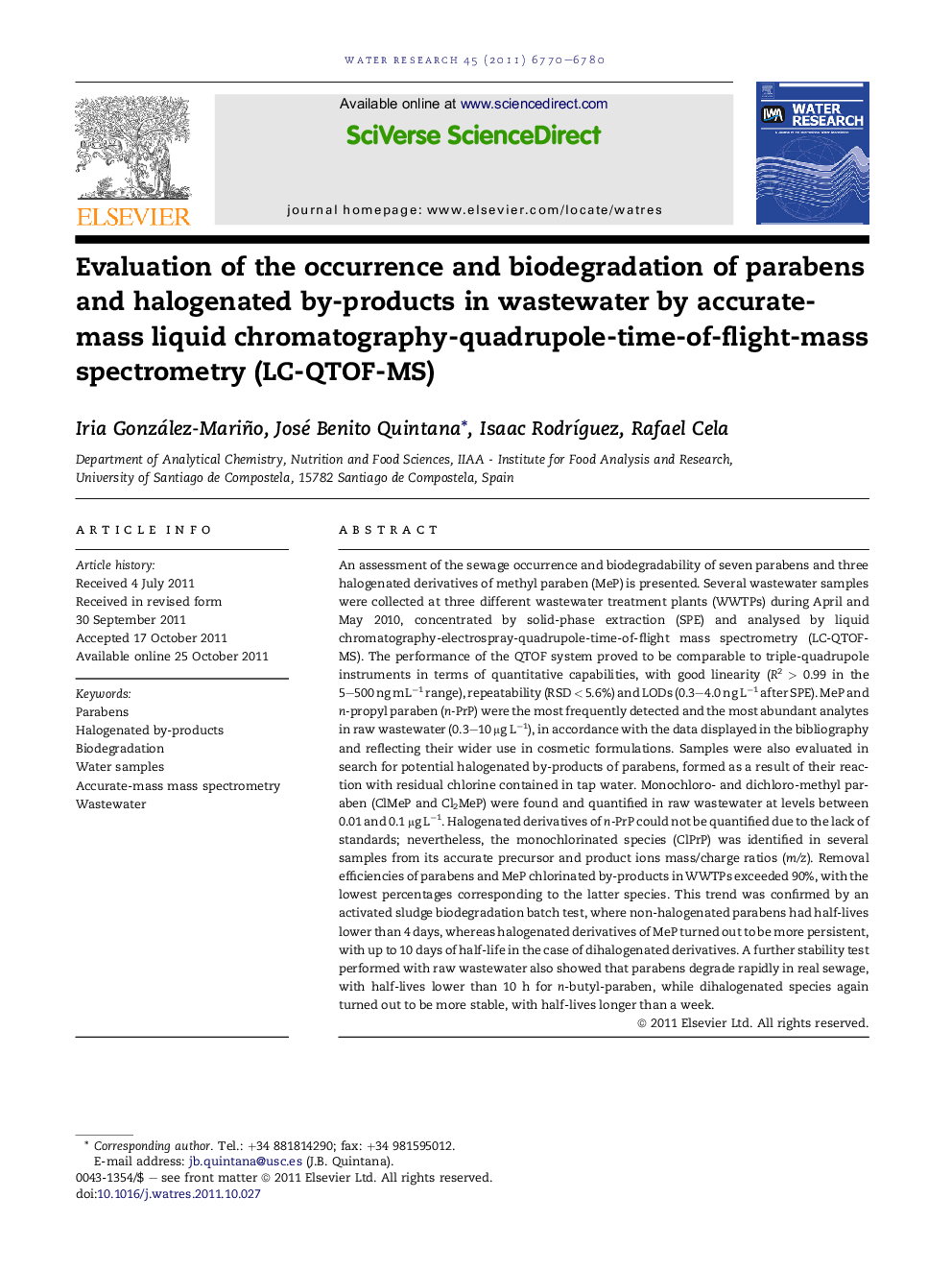| کد مقاله | کد نشریه | سال انتشار | مقاله انگلیسی | نسخه تمام متن |
|---|---|---|---|---|
| 4482575 | 1316863 | 2011 | 11 صفحه PDF | دانلود رایگان |

An assessment of the sewage occurrence and biodegradability of seven parabens and three halogenated derivatives of methyl paraben (MeP) is presented. Several wastewater samples were collected at three different wastewater treatment plants (WWTPs) during April and May 2010, concentrated by solid-phase extraction (SPE) and analysed by liquid chromatography-electrospray-quadrupole-time-of-flight mass spectrometry (LC-QTOF-MS). The performance of the QTOF system proved to be comparable to triple-quadrupole instruments in terms of quantitative capabilities, with good linearity (R2 > 0.99 in the 5–500 ng mL−1 range), repeatability (RSD < 5.6%) and LODs (0.3–4.0 ng L−1 after SPE). MeP and n-propyl paraben (n-PrP) were the most frequently detected and the most abundant analytes in raw wastewater (0.3–10 μg L−1), in accordance with the data displayed in the bibliography and reflecting their wider use in cosmetic formulations. Samples were also evaluated in search for potential halogenated by-products of parabens, formed as a result of their reaction with residual chlorine contained in tap water. Monochloro- and dichloro-methyl paraben (ClMeP and Cl2MeP) were found and quantified in raw wastewater at levels between 0.01 and 0.1 μg L−1. Halogenated derivatives of n-PrP could not be quantified due to the lack of standards; nevertheless, the monochlorinated species (ClPrP) was identified in several samples from its accurate precursor and product ions mass/charge ratios (m/z). Removal efficiencies of parabens and MeP chlorinated by-products in WWTPs exceeded 90%, with the lowest percentages corresponding to the latter species. This trend was confirmed by an activated sludge biodegradation batch test, where non-halogenated parabens had half-lives lower than 4 days, whereas halogenated derivatives of MeP turned out to be more persistent, with up to 10 days of half-life in the case of dihalogenated derivatives. A further stability test performed with raw wastewater also showed that parabens degrade rapidly in real sewage, with half-lives lower than 10 h for n-butyl-paraben, while dihalogenated species again turned out to be more stable, with half-lives longer than a week.
► Parabens and halogenated by-products were investigated in wastewater.
► LC-QTOF-MS allows the simultaneous quantification and screening of these pollutants.
► Methyl & n-propyl parabens are ubiquitous in raw wastewater, at μg L−1 level.
► Chlorinated methyl & propyl parabens detected in all raw wastewaters (10–100 μg L−1).
► Good removal at WWTPs, but halogenated parabens are more resistant to biodegradation.
Journal: Water Research - Volume 45, Issue 20, 15 December 2011, Pages 6770–6780